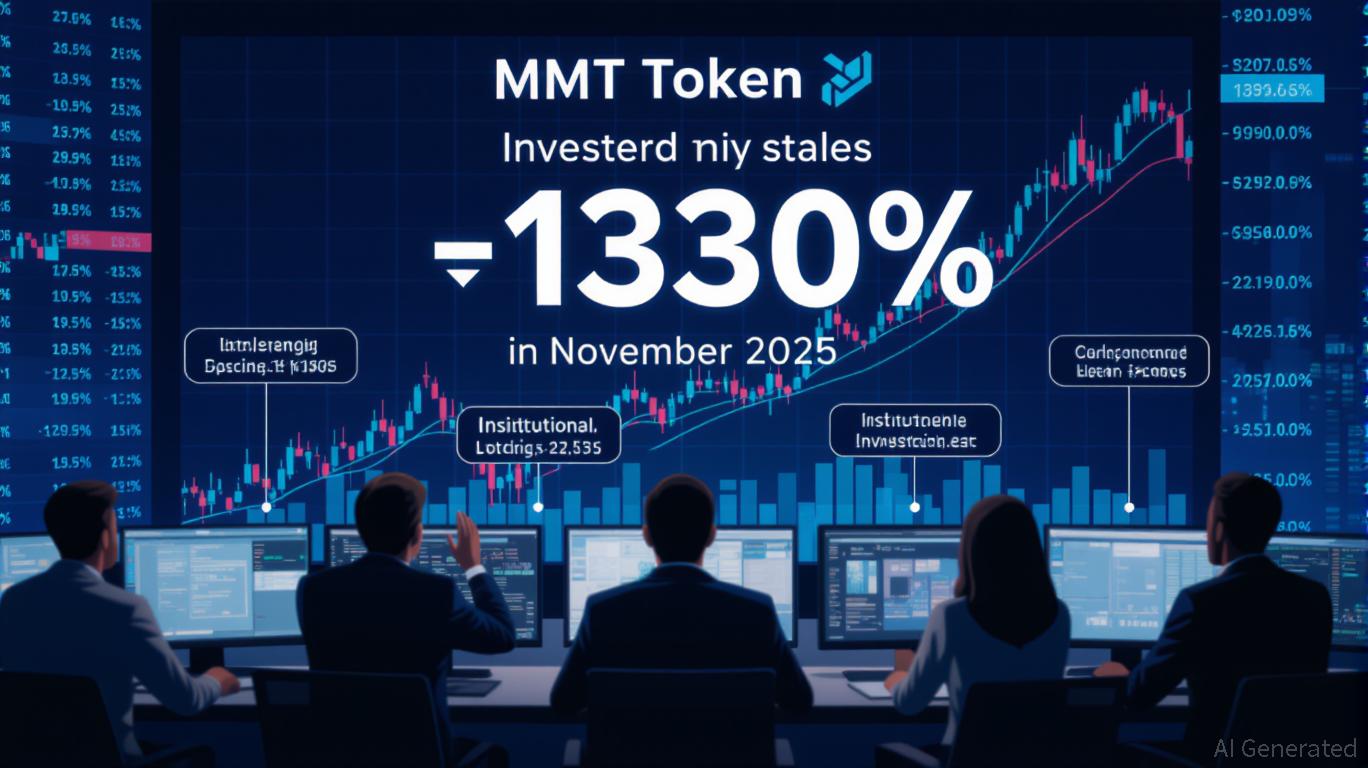PENGU Token’s Unstable Path: Chart Analysis and Key Momentum Factors in the Latter Part of 2025
- PENGU token fell 30.5% to $0.01485 in late 2025, trading within $0.01454-$0.01666 range amid mixed technical signals. - TD Sequential buy signals and improved CVD suggest stabilization, but short-term SMAs and derivatives data remain bearish. - On-chain metrics show 30% higher active addresses and whale accumulation, contrasting with $7.68M in leveraged short positions. - Analysts recommend cautious "hold" strategy, emphasizing $0.01454 support level and potential for renewed bullish momentum above $0.01
Price Movements and Key Support Levels
PENGU’s latest decline has been marked by significant support zones that could determine its immediate trend. On November 5, the token lost more than 10% as

Technical Analysis: Short-Term Bearishness, Unclear Medium-Term
Short-term moving averages (8, 13, 21, 55 SMA) all indicate a bearish trend, with negative changes from -1.29% to -1.80%, while only the 144 SMA shows a positive reading at +3.96%, according to an
MACD and On-Chain Trends: Indications of Reduced Selling Pressure
The MACD for PENGU has recently shown a minor positive shift in late 2025, pointing to a possible easing of bearish pressure as the price neared $0.01589, according to a
Derivatives Market: Bearish Sentiment Remains
Despite some encouraging on-chain developments, sentiment in the derivatives market is still negative. Short positions at $0.01579 amount to $7.68 million, with most leveraged trades falling in the 25x to 50x range, according to the
Strategic Takeaways
The overall data presents a complex scenario: while technical and on-chain indicators point to possible stabilization, derivatives activity and short-term averages still favor a bearish outlook. For investors, the TD Sequential buy signal and improving CVD suggest a prudent "hold" approach, with close attention to the $0.01454 support. A sustained move above $0.01666 could revive bullish sentiment, but until that happens, downward pressure is likely to persist.
Disclaimer: The content of this article solely reflects the author's opinion and does not represent the platform in any capacity. This article is not intended to serve as a reference for making investment decisions.
You may also like
MMT Token Experiences Rapid Price Increase and Entry of Institutions: Evaluating Speculative Trends and Sustainable Prospects
- MMT token surged over 1300% on Binance in November 2025, driven by exchange listings and a 0.75% airdrop to BNB holders. - Institutional investors like 1607 Capital Partners increased MFS Multimarket Income Trust stakes by 84.7%, signaling yield-focused confidence. - Binance's margin trading and futures contracts, plus Upbit/Bithumb listings, amplified liquidity but exposed MMT to volatile market sentiment. - Absence of influencer endorsements highlights structural factors (airdrops, institutional alignm

Trust Wallet Token (TWT) Price Forecast: Will the Latest Strategic Alliance Ignite a Bullish Turnaround?
- Trust Wallet's Onramper partnership expands fiat-to-crypto access via 130+ local payment methods in 190+ countries, aligning with post-DeFi utility-driven adoption. - The collaboration boosts TWT demand through 210M+ users funding wallets via UPI/VietQR/M-Pesa, enhancing token utility for governance and fee discounts. - Elliptic's $100M institutional backing highlights growing blockchain data infrastructure importance, indirectly validating Trust Wallet's compliance-focused onboarding strategy. - TWT's v

TWT Introduces a Revamped Tokenomics Framework: Transforming DeFi Rewards and Influencing User Actions
- Trust Wallet's TWT tokenomics shift to utility-driven incentives via Trust Premium, replacing speculative governance with tiered rewards for user engagement. - FlexGas and RWA partnerships expand TWT's utility as a fee currency and bridge between DeFi and traditional finance, enhancing demand and scarcity. - Tiered rewards and token locking create flywheel effects, stabilizing supply while incentivizing long-term participation over short-term liquidity. - Challenges include Binance's collateral ratio cut

Astar 2.0: Redefining Web3 Infrastructure for the Next Generation
- Institutional investors are increasingly allocating to digital assets, with Astar 2.0 emerging as a key platform due to its scalability and interoperability. - Astar 2.0’s hybrid architecture and partnerships with global enterprises like Casio and Sony enhance its institutional appeal through real-world applications. - The platform’s on-chain governance and enterprise-grade security align with institutional priorities, despite challenges in transparent communication and competition.
